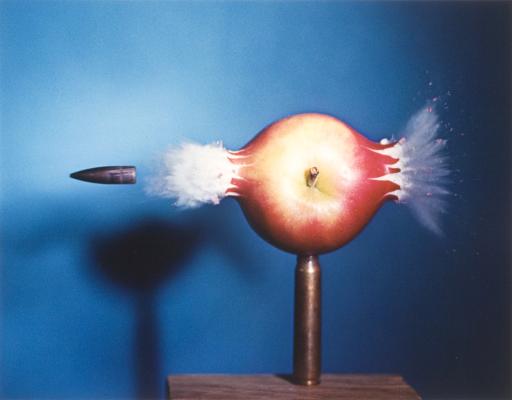How to Make Applesauce at M.I.T. .30-caliber Bullet, Dr. Harold Eugene Edgerton
Artwork Overview
Dr. Harold Eugene Edgerton, artist
1903–1990
How to Make Applesauce at M.I.T. .30-caliber Bullet,
1964
Where object was made: United States
Material/technique: dye transfer print
Dimensions:
Image Dimensions Height/Width (Height x Width): 35.8 x 45.8 cm
Image Dimensions Height/Width (Height x Width): 14 1/8 x 18 1/16 in
Mat Dimensions (Height x Width): 20 x 25 in
Image Dimensions Height/Width (Height x Width): 35.8 x 45.8 cm
Image Dimensions Height/Width (Height x Width): 14 1/8 x 18 1/16 in
Mat Dimensions (Height x Width): 20 x 25 in
Credit line: Museum purchase
Accession number: 1985.0008
Not on display
If you wish to reproduce this image, please submit an image request



